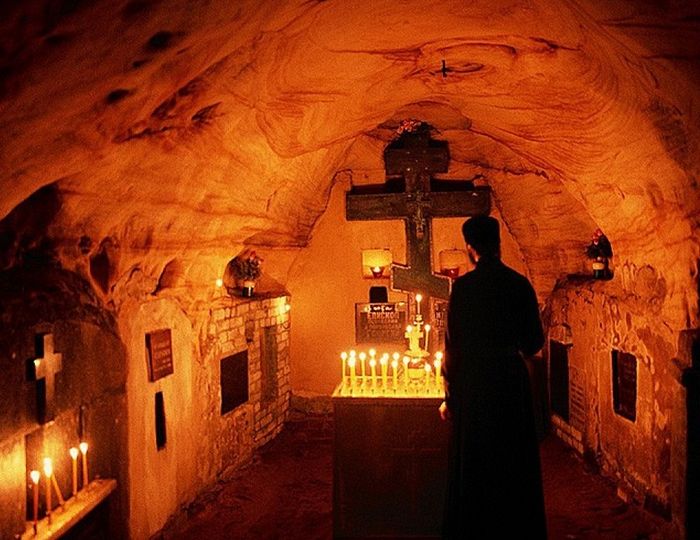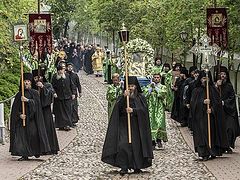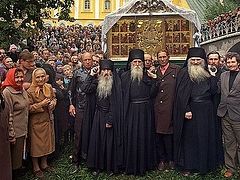Pskov, November 1, 2019
Restoration on the caves of the Pskov Caves Monastery and work to strengthen the slopes that surround them will begin this month, His Eminence Metropolitan Tikhon (Shevkunov) of Pskov and Porkhov, the abbot of the ancient monastery, told journalists in Moscow yesterday.
“Now, in November, we will probably start work on strengthening the slopes and neutralizing the problem areas that are above the caves of the Pskov Caves Monastery,” His Eminence said, reports Interfax-Religion.
The matter is complicated, Met. Tikhon noted, as collapses in some places created cavities between the slopes and the caves themselves.
“We conducted a large-scale study of all the slopes and the caves themselves for the first time this year, because we saw that the caves, especially of the Pskov Caves Monastery, are in a near-emergency state,” Met. Tikhon explained.
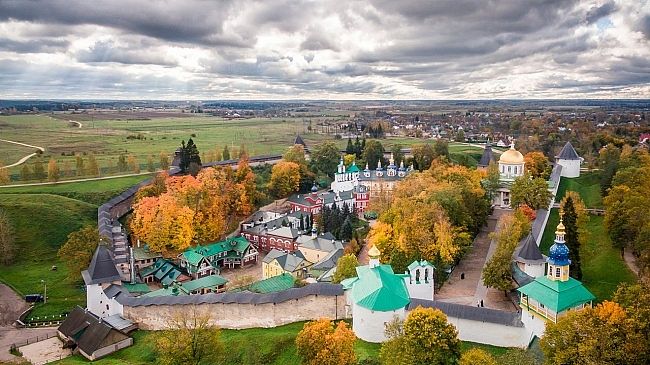 Pskov Caves Monastery. Photo: monasterium.ru
Pskov Caves Monastery. Photo: monasterium.ru
“With God’s help, we will not allow [the loss of the caves], although the situation is difficult,” His Eminence said, as reports RIA-Novosti.
Met. Tikhon also noted that similar work will be carried out at the Nativity of the Theotokos-Snetogorsky Monastery, where the slope is collapsing into the Velikaya River. “It would be a real tragedy, which would entail the destruction of the famous monument church with frescoes from the 14th century,” he said, referring to the Cathedral of the Nativity of the Mother of God, built in 1312.
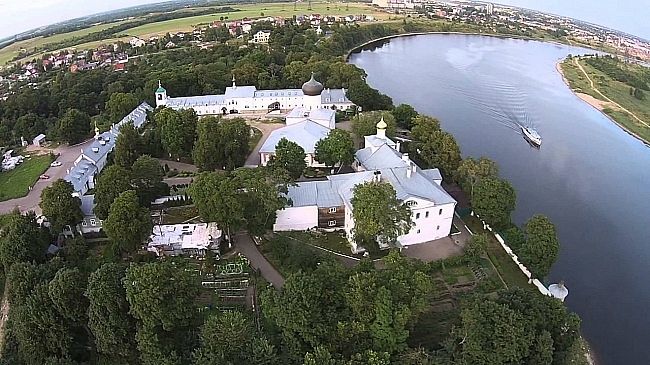 Snetogorsky Monastery. Photo: monasterium.ru
Snetogorsky Monastery. Photo: monasterium.ru
The restoration project will receive funds from specialists, financiers, and the state, as the objects in question are state monuments.
The Pskov Caves Monastery was built around the cave churches, and is called “God-built” by the Orthodox faithful. The first cave church was consecrated in 1473, dug into a hill of sandstone. Like the Kiev Caves Lavra, the complex consists of Near and Far caves. The near caves extend about 50 feet and are open to the public, while entrance to the far caves is possibly only by prior arrangement. The caves are home to the graves of monastics, saints, pilgrims, pious laity, and soldiers who defended the monastery. It is believed that there are as many as 10,000 people or more buried in the caves.The condition of the caves has caused concern among specialists in recent years.
Snetogorsky Monastery was first mentioned in 1299. The Cathedral of the Nativity of the Most Holy Theotokos was built in 1312, and its frescoes have survived to this day. The monastery survived the invasion of the Swedes and the Poles; the German army headquartered in the monastery during Nazi occupation, and during Soviet times it was turned into a rest home. Monastic life was revived in 1993.
Restoration work is also currently underway in the Near Caves of the Kiev Caves Lavra, during which the place of ascetic struggle of St. John the Long-Suffering was revealed.

